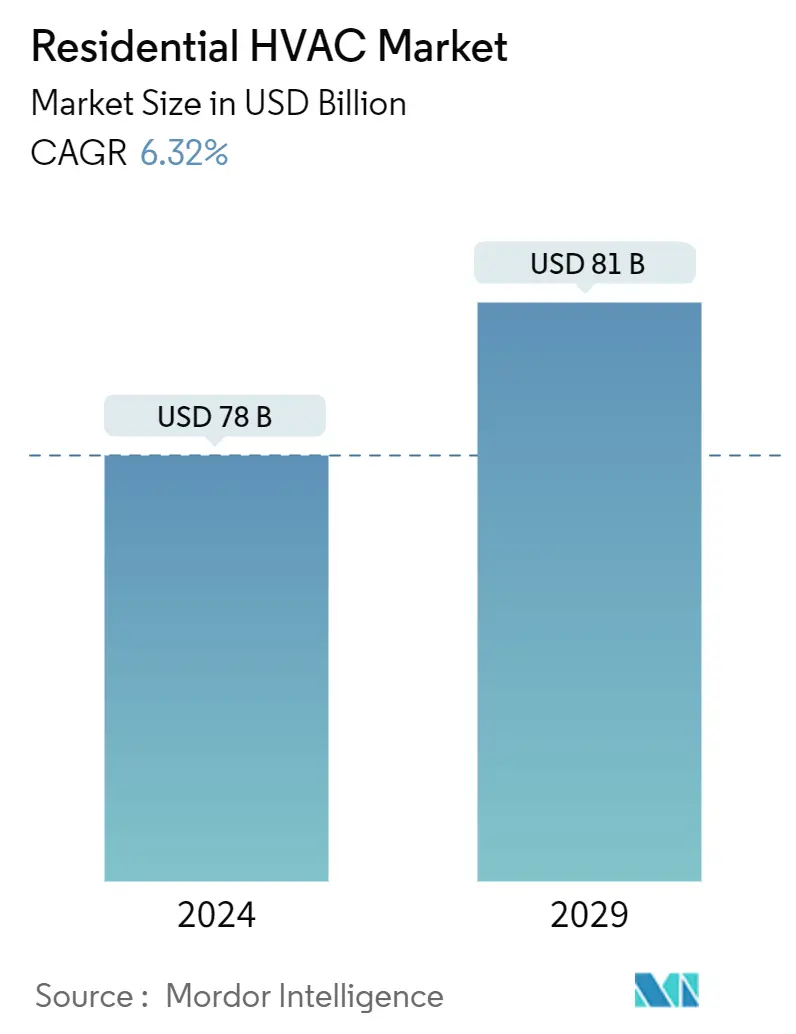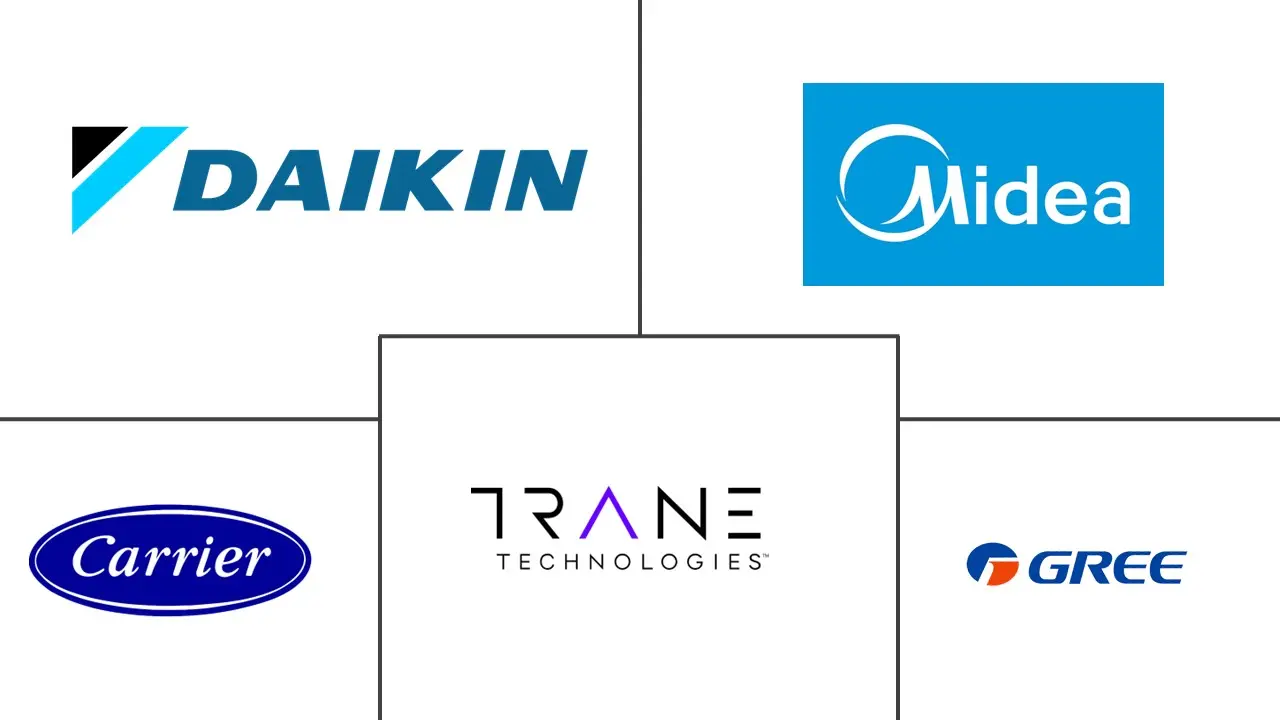Market Size of Residential HVAC Industry

| Study Period | 2019 - 2029 |
| Market Size (2024) | USD 78 Billion |
| Market Size (2029) | USD 81 Billion |
| CAGR (2024 - 2029) | 6.32 % |
| Fastest Growing Market | Asia Pacific |
| Largest Market | North America |
Major Players
*Disclaimer: Major Players sorted in no particular order |
Need a report that reflects how COVID-19 has impacted this market and its growth?
Residential HVAC Market Analysis
The Residential HVAC Market size is estimated at USD 78 billion in 2024, and is expected to reach USD 81 billion by 2029, growing at a CAGR of 6.32% during the forecast period (2024-2029).
The market growth is attributed to the growing demand for energy-efficient and smart HVAC systems, the growing urban population, changing climate conditions, and advanced HVAC systems with cutting-edge technologies.
- Air conditioners, including window units and through-the-wall, are gaining momentum in hot and high-income countries with the growing temperatures and increasing consumer spending. The increasing shipments of air conditioners worldwide accelerate the market growth.
- The growing need for space and water heating drives the adoption of heat pumps in cold regions. Further, the increased government incentives and policy support for heat pumps amid high natural gas prices and efforts to reduce greenhouse gas emissions fuel the adoption of heat pumps. For instance, according to IEA, in 2022, the global sales of heat pumps increased by 11% compared to the previous year. In Europe, the sales of heat pumps increased by around 40% compared to the previous year, reaching around 3 million units.
- In recent years, HVAC manufacturers have been focusing on developing smart equipment with the integration of cutting-edge technologies such as AI, Analytics, and automation developed to improve their market position and stay competitive. For instance, in February 2023, Hisense launched smart air conditioners in India - IntelliPro and CoolingXpert. The new air conditioners offer a variety of features, including a 5-in-1 Convertible Pro, a WIFI Voice Control, and others. Also, it includes a sleep mode and automatically changes the temperature, which helps to save energy usage up to 36%.
- Russia and Ukraine's war had a major impact on natural gas and electricity; the prices increased exponentially, encouraging consumers to switch to other more efficient heating options, such as heat pumps. In response to high prices for natural gas and the government export/import ban imposed on Russia, European Commission planned to double the installation of heat pumps to reduce the reliance on Russia for Natural gas. Most of the European Union countries are also incentives to make this target achievable.
- The COVID-19 pandemic severely impacted the whole global supply chain, causing a shortage of raw materials, increased delivery time, and suspended production for a short period. The demand for air ventilators increased due to keeping the air clean and pure. The HVAC system modifications helped reduce the spread of the coronavirus by improving ventilation, purifying air, and managing airflows in rooms. According to Ensavior, the HVAC systems provider state,d the demand for high-quality air filtration systems increased during the COVID-19 pandemic as consumers wanted clean air.
